#svaty vaclav
Explore tagged Tumblr posts
Photo

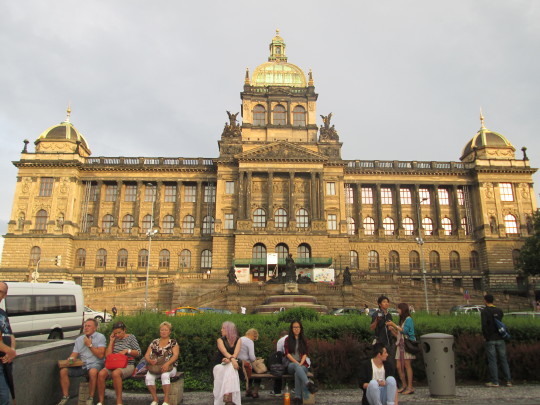

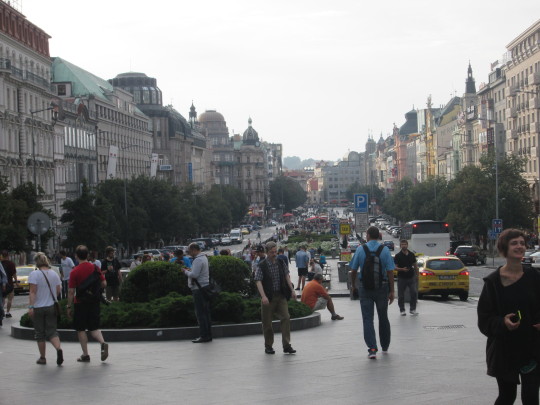
Prague, Czechia, 2014.08.05. Wenceslas Square
52 notes
·
View notes
Photo
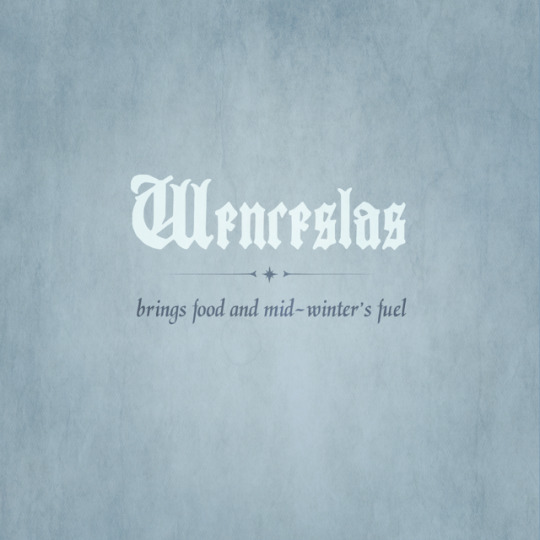
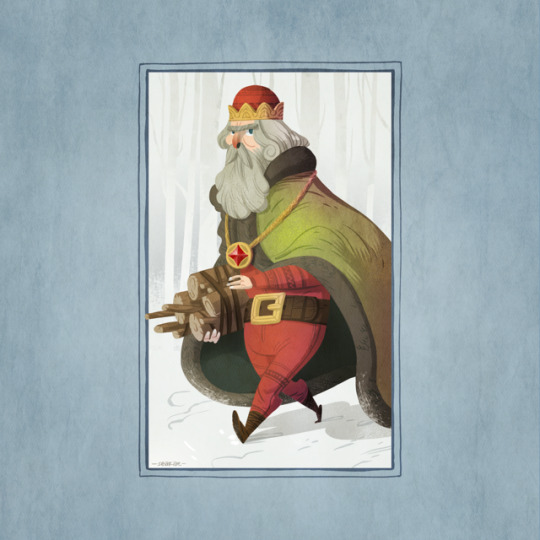
The Alphabet of Christmas, by Benito Cereno and Chuck Knigge, day 23: Wenceslas brings food and mid-winter’s fuel
Saint Wenceslas, known in his native Czech as Svatý Václav, was the duke of Bohemia from 921 until his death in 935. His actions during his life were considered so magnanimous and just that he was posthumously named a king by the Holy Roman Emperor as an example of a rex justus, or righteous king.
He obtained the rule of Bohemia while still a young man, and soon found himself faced with a rebellious duke named Radslav. Rather than risk the lives of his foot soldiers, Wenceslas challenged Radslav to single combat for command of the kingdom. Radslav launched one spear and then another at Wenceslas, but neither found his mark, for Wenceslas had the protection of heaven, and angels had deflected Radslav’s weapons. When the rebellious duke saw this, he surrendered.
His connection to Christmas comes from the most famous example of his great generosity. One year on St Stephen’s day (December 26), he saw a poor man struggling to gather firewood in the midst of a storm. Summoning a page, he gathered up food, wine, and firewood and set out to find and save the man. The young page began to falter in the cold, but Wenceslas told him to step where the duke’s feet had impressed on the snow. Doing so, the page found himself miraculously warmed by following in Wenceslas’s footsteps. The mighty saint showed that those who would bless the poor would themselves find blessing.
While Wenceslas does not come to deliver gifts the way most of the other figures in this alphabet do, he still watches over his home of Bohemia (now the Czech Republic) and will rise in Prague when his homeland is in its hour of greatest need, raising his army from the mountain Blanik, where they lie sleeping in wait.
Previous letters here.
#christmas#alphabet of christmas#good king wenceslas#saint wenceslaus#svaty vaclav#bohemia#czech republic#benito cereno#chuck knigge
83 notes
·
View notes
Text
Cannot fucking believe that I have very passionate opinions on medieval music now
#the salutation carol and nas mily svaty vaclave are the two best medieval christmas carols fight me#medieval
2 notes
·
View notes
Photo

Saint Wenceslas | Svatý Václav
Saint Wenceslas is one of the most popular Czech saints, patron saint of the Czech lands, martyr and figure whose tradition has played a very important role in the emancipation of the Czech state and the Přemyslid dynasty in Christian Europe.
In addition to the work of the Saxon chronicler Widukind of Corvey historians derive their knowledge of Duke* Václav primarily from numerous legends.
Childhood

Václav was born in Prague sometime around 907. He was raised in hillfort Budeč by his grandmother - wife or first documented Czech king Bořivoj I - Ludmila. Here he received an unusual education.
According to legends, Václav was unusually well educated for his time. He was reportedly taught in Old Slavonic language, Latin and perhaps even Greek by Slavic priests and his grandmother Ludmila. This statement is due to the prevailing illiteracy of European rulers during this period rather unlikely. It is therefore possible that the authors of the legend - the monks, bestowed Václav’s person with characteristics that have been requested from nuns. The image of a monk on the throne seems to some contemporary historians greatly distorted. So back to the facts…
After death of Vratislav in 921, Václav was only 14 so ruling of the country deepened on Václav's mother Drahomíra. Václav along with his younger brother Boleslav remained in the care of Ludmila. But soon these two women got into dispute over their influence on Václav and relationship to Saxony, which suddenly became the centre of power and started to subdue neighbouring Slavic tribes.

Their wrangle ended up with Ludmila being strangled by two of Drahomíra's men. Ludmila too became saint but much later than Václav.
Duke of Bohemia

*I use the term duke rather than prince, even if in many English works you can find Václav listed as a prince. First: ruler of duchy = duke. Second: in Czech prince (“princ”) is just king’s son who wasn't crowned yet.
After the fall of Great Moravia, the rulers of the Bohemian duchy had to deal with the forces of the Saxon duke and East Frankish king Henry the Fowler, who had started several eastern campaigns into the adjacent lands of the Polabian Slavs, homeland of Václav's mother. To withstand Saxon overlordship Václav's father Vratislav had forged an alliance with the Bavarian duke Arnulf the Bad, then a fierce opponent of King Henry; however, it became worthless when Arnulf and Henry reconciled at Regensburg in 921.
Early in 929 the joint forces of Duke Arnulf of Bavaria and King Henry I the Fowler reached Prague in a sudden attack, which forced Václav to resume the payment of a tribute which had been first imposed by the East Frankish king Arnulf of Carinthia in 895.
This move was examined by many of our historians. Some of them regard this moment as the beginning of incorporation into Holy Roman Empire. Some less scientific theories say that Václav saved Czechs from the fate of Polabian Slavs, who under strong German influence died out, or in past there were opinions that he actually sold out the country.
Explanation: Henry had been forced to pay a huge tribute to the Magyars in 926 and he therefore needed the Bohemian tribute which Václav probably refused to pay any longer after the reconciliation between Arnulf and Henry. One of the possible reasons for Henry's attack was also the formation of the anti-Saxon alliance between Bohemia, the Polabian Slavs and the Magyars.
But Přemyslids had problems even between themselves. There were two belligerent groups - one in favour of Ludmila and the other preffering Drahomíra. Václav showed to be a part of the first group when he drove out his mother from Prague and carried Ludmila's relics to be burried there. Other conflict was with his younger brother Boleslav and his followers, motivated probably by Václav's concessive foreign politics.
Václav's positive views on Christianity were too subjects of exaggeration in legends. There is high probability that he in fact didn't destroy pagan idols, cultivated vine with his own hands or bought slaves and gave them freedom. It's true that he built many churches but again so did his predecessors. Only church that still in a way remained is his rotunda of Saint Vitus that is nowadays a part of the famous Saint Vitus cathedra in Prague.

While looking closely you might be able to spot rotunda in ground plan of St. Vitus Cathedral.
Death
We can't be completely sure on what exact day he died but it's not impossible that it happened on 28th September 929.
Legend says that Boleslav invited his brother Václav to the feast in his town Stará Boleslav. The next day Václav went for a morning prayer. He met his brother who suddenly hit him on the head with his sword and then let his men to kill him. In one version of this legend wounded Václav tries to escape by hiding in the church. But priest didn't open the door and let Boleslav's men beat him to death at the church's doorstep.

According to Kosmas's Chronicle, one of Boleslav's sons was born on the day of Václav's death, and because of the ominous circumstance of his birth the infant was named Strachkvas, which means "a dreadful feast". In the medieval atmosphere of blood feud, persecution and slaughtering also awaited Václav's men and allies.
Some theories say that this fratricide was only a very bad luck on Václav's side. When he met his brother, he addressed him arrogantly so they got into fight. When Boleslav's men saw Václav staying above Boleslav lying on the ground, they only attacked in their lord's defence.
Ironically Boleslav is by our historians considered as one of our most successful rulers who uplifted Bohemia both politically and economically.
Afterlife

Václav became the first Czech saint and the only Czech saint whose feast day is part of the worldwide calendar of the Roman Catholic Church. His popularity is also due a long religious tradition in the country. The cult, to which eventually turned even Boleslav himself, began to show significantly since the second half of the 11th century.
Václav's assigned virtues as saint were: pious and moral life, spreading of Christian faith, versatile acts of mercy and love, care for the poor, bravery and mad skills in horse riding.
It's said that after his death his limbs grew back and that later he appeared to his sister and advised her where to search for his cut-off ear. But few supernatural things happened already during his life. For example once he was late for assembly of dukes summoned by Henry of Saxony. Henry got angry at him and ordered everybody to treat Václav as mere yeoman when he shows up. But as Václav finally arrived, Henry immediately stood up and greeted Václav. Afterwards Henry told others that he saw golden cross above Václav's head and two angles making threatening gestures at him! After the end of the assembly Henry offered Václav to pick anything from king's treasury (he picked shrine of Saint Vitus). After this act they actually became spiritually related.
An enduring legend claims a huge army of knights sleeps inside Blaník, a mountain in the Czech Republic. The knights will awake and under the command of St. Václav bring aid to the Czech people when they face ultimate danger.
The relics and cult

The original symbol of the Czech duchy, long before the silver lion, was a flaming eagle (later called St.Václav eagle). You can see it on the top. On the sides there are coats of arms from Czech lands and...Slovakia. Clearly it was made sometime after 1918.
The relics of St. Václav are now stored in the Prague Castle in St. Vitus Cathedral. The skull is exposed during releigous festive occasions.
The hymn "Svatý Václave" (Saint Wenceslas) or "Saint Wenceslas Chorale " is one of the oldest known Czech songs in history. Its roots can be found in the 12th century and it still belongs to the most popular religious songs to this day. In 1918, in the beginning of the Czechoslovak state, the song was discussed as one of the possible choices for the national anthem.
Charles IV very much claimed legacy of his Přemyslid ancestors, who in 10th century considered Václav as the patron saint of the family and the protector of Czech lands. Charles IV had made Saint Wenceslas/Václav crone, symbolically devoted to this Czech saint, his patron and namesake. Later Václav was claimed to be the eternal duke of the Czech lands.
Czech scouts too can boast off with the fact that their patron is St. Václav.
St. Wenceslas millennium was celebrated at the ceremonial opening the St. Vitus cathedral in 1929 with the participation of President T.G. Masaryk and Prague Archbishop Francis Kordač.

Sadly, Václav's figure was abused during World War II by Nazis. They took over some Czech revivalists theories that depicted him as a weak man and started to present him as someone whose greatest service was giving his country to Germans. Saint Wenceslas eagle was then the highest honor for Czechs who collaborated with the Nazis.
Václav is the subject of the popular Saint Stephen's Day (celebrated on December 26 in the West) Carol, "Good King Wenceslas". However, most of Czechs are not familiar with this carol.
Today St. Václav is depicted on Czech 20 crown coin.
28th September is the day of Václav's death but also the Day of Czech Statehood. Last but not least it's a name day of all Václavs. Best wishes!
Sources: Boleslav and Václav articles on Czech wikipedia + English translation of German wiki. Everything added by me comes from general knowledge (which I always check for accuracy - just in case).
#czech republic#svaty vaclav#saint wenceslas#czechs#czech history#premyslid#premyslid dynasty#famous czechs
94 notes
·
View notes
Text
Okamura (SPD): Svatý Václav stojí u kořenů české suverenity a státnosti
Komentář na facebookovém profilu k historickému významu sv. Václava source http://www.parlamentnilisty.cz/politika/politici-volicum/Okamura-SPD-Svaty-Vaclav-stoji-u-korenu-ceske-suverenity-a-statnosti-638607
0 notes
Text
St. Wenceslas Day; the day of Czech statehood - September 28
(Czech: Sv. Václav, Den české státnosti) The day when whole nation remembers the main patron of Czechs - Saint Wenceslas (Czech: Svatý Václav). He was one of the early Přemyslid dukes of Bohemia. Václav ruled until his death on September 28, 935 when he was murdered by his younger brother Boleslav. He is also the first Czech ruler to suffer a martyr's death, creating many legends afterwards. Saint Václav's tradition has played a very important role in the emancipation of the Czech state and the Přemyslid dynasty in Christian Europe. His relics are buried in St. Vitus cathedral.

The statue of Saint Wenceslas on St. Wenceslas square where many important events of Czech history took place.
Reality: One of the longest squares in Prague is named after this historical figure. The statue of Saint Wenceslas ast the top of the square is a popular meeting point. Mases in the name of St Wenceslas are also said.
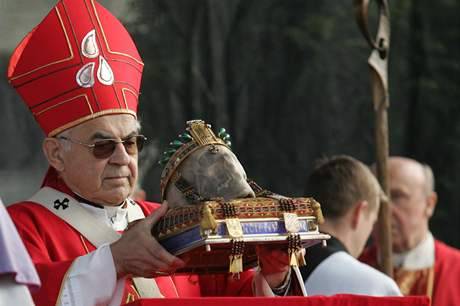
We might not know how Václav looked when he was in rule but we surely know how he looks now.
96 notes
·
View notes